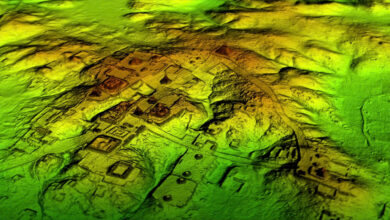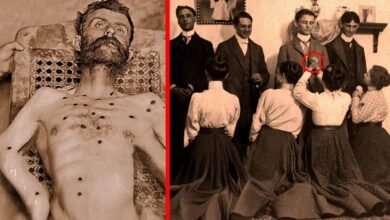The Oldest Money in the World Was Made of Copper

The societies of Bronze Age Central Europe, around 4,000 years ago, may have used small metal bars and rings as a form of money, although this idea challenges our typical understanding of early financial systems. This period, around 2000-1600 BC, saw the rise of powerful kingdoms in Central Europe, much like those in ancient Egypt, Mesopotamia, and Crete. While these cultures were historically advanced, Central Europe during the Bronze Age had its own sophisticated systems, controlled by powerful elites who buried their rulers in elaborate tombs filled with treasures.
These societies were wealthy and played a central role in regional trade. They produced massive amounts of copper, a key material for the Bronze Age, and used it for tools, weapons, jewelry, and even metal objects shaped like rings and bars. These objects, found in large quantities across Central Europe, are considered by some scholars to have functioned as a form of currency, despite being made over a millennium before the invention of the first coins in Lydia (modern-day Turkey).

The society’s wealth and organizational complexity are evident through their control of trade routes, mining regions, and the skilled craftsmanship of their people. These societies were highly interconnected, trading goods between the Baltic and the Mediterranean, as well as with the steppes in the East. This strategic position allowed them to accumulate wealth, which was reflected in monumental tombs and lavish artifacts. Archaeologists have also discovered small clay tokens (called “bread loaf idols”) that may have been used for tracking trade goods or payments, suggesting an early form of economic organization.
In terms of metal artifacts, two major types are found from this era: rib ingots and ring ingots. These were produced in vast quantities and often buried in “hoards” — intentionally hidden caches of valuables. These hoards provide critical insight into Bronze Age trade and society, although the reasons for burying them remain speculative. Some believe these hoards were offerings to the gods, or perhaps used to take surplus goods out of circulation to control inflation.
Rib ingots were small, curved copper pieces, while ring ingots were metal loops, possibly used as decorative jewelry before being repurposed as units of exchange. Both types of ingots were smaller and lighter than other ingots from the same era, suggesting they could have been used for smaller-scale transactions. Their uniformity also implies that they might have served as a standardized form of currency, with their weight and size being carefully regulated.
Some scholars believe these ingots fit the definition of money, as they had a limited supply (controlled by elites), were durable, portable, and divisible into smaller units for trade. Their value was regulated by the scarcity of copper, which was a precious commodity at the time. Additionally, the discovery of these ingots in groups and in relation to axes, another form of trade item, supports the theory that they were part of a broader monetary system. The bundling of ingots into groups of five or ten, as well as the use of a standardized weight system, further suggests a level of economic sophistication.
In conclusion, while it may seem unlikely that Central Europe had a form of money before coins were introduced, the evidence points to an advanced economic system using copper ingots as a medium of exchange. This insight into Bronze Age trade practices opens a window into the complex societies of prehistoric Europe and their role in global trade networks.








